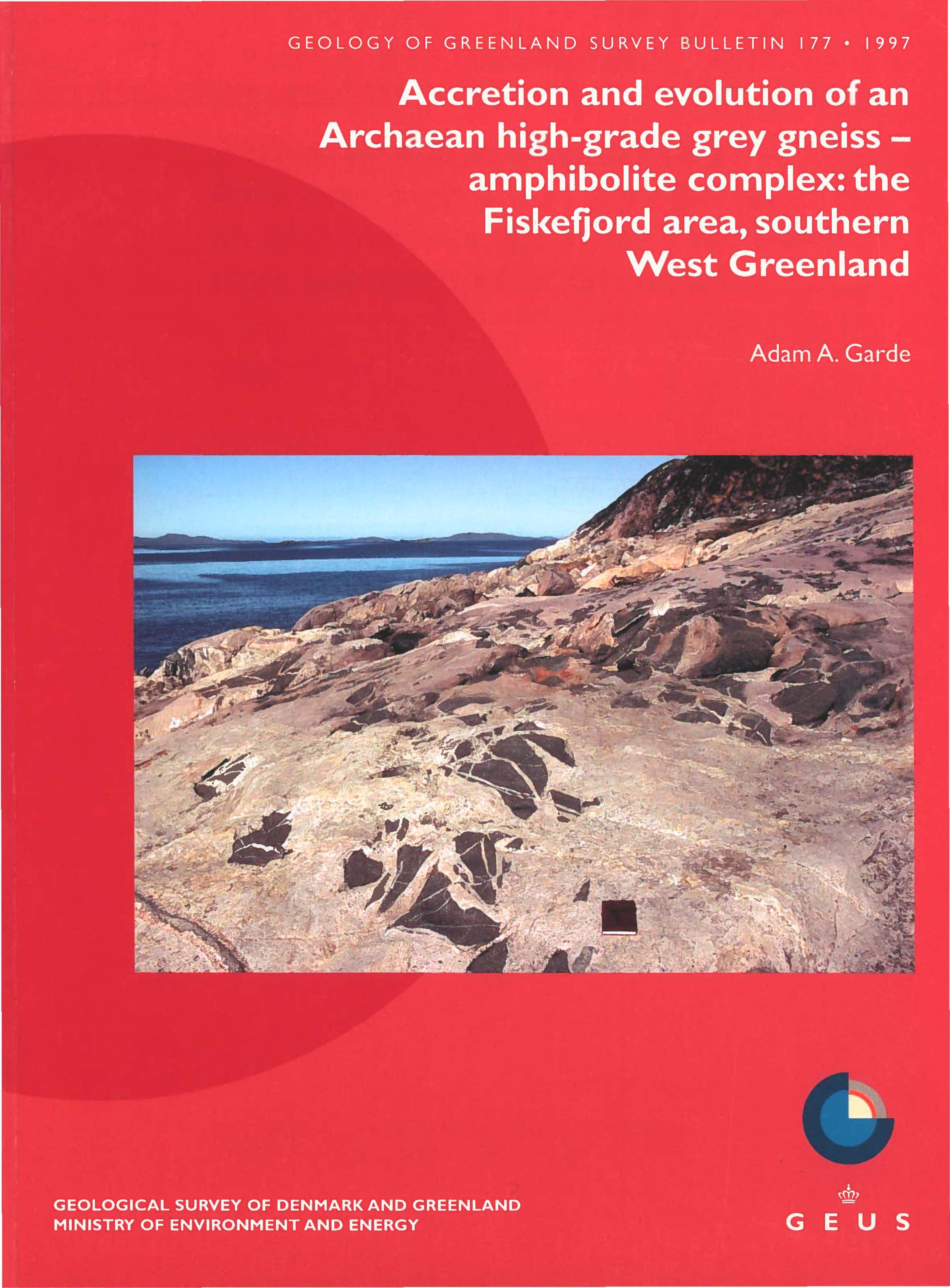Accretion and evolution of an Archaean high-grade grey gneiss – amphibolite complex: the Fiskefjord area, southern West Greenland
DOI:
https://doi.org/10.34194/ggub.v179.5075Abstract
The Fiskefjord area in southern West Greenland, part of the Akia tectono-stratigraphic terrane, comprises a supracrustal association and two groups of grey quartzo-feldspathic orthogneises c. 3200 and 3000 Ma old. The supracrustal association forms layers and enclaves in grey gneiss and may comprise two or more age groups. Homogeneous amphibolite with MORB-like but LIL element enriched tholeiitic composition predominates; part, associated with cumulate noritic and dunitic rocks, represents fragments of layered complexes. Heterogeneous amphibolite of likely submarine volcanic origin, (basaltic) andesitic amphibolite, leucogabbro-anorthosite, and minor pelitic metasediment occur. Disruption by magmatic and tectonic events and geochemical alteration have obscured primary origin: the supracrustal association may represent oceanic crust.
Grey orthogneiss of the tonalite-trondhjemite-granodiorite (TTG) association was generated during continental accretion at c. 3000 Ma, most likely by partial melting of wet and hot tholeiitic basaltic rocks subducted in a convergent plate setting. Most dioritic gneiss is c. 220 Ma older. A 3040 Ma dioritic to tonalitic phase, enriched in P2O5 , Ba, Sr, K, Pb, Rb and LREE, probably was derived from metasomatised mantle.
Intense deformation and metamorphism accompanied the 3000 Ma magmatic accretion.Thrusts along amphibolite-orthogneiss contacts were succeeded by large recumbent isoclines, upright to overturned folds, and local domes with granitic cores. Syntectonic granulite facies metamorphism is thought to be due to heat accumulation by repeated injection of tonalitic magma. Strong ductile deformation produced steep linear belts before the thermal maximum ceased, whereby folds were reorientated into upright south-plunging isoclines. Two large TTG complexes were then emplaced, followed by granodiorite and granite.
Post-kinematic diorite plugs with unusually high MgO, Cr and Ni, and low LIL and immobile incompatible element contents, terminated the 3000 Ma accretion. Hybrid border zones and orbicular textures suggest rapid crystallisation from superheated magma. The diorites most likely formed from ultramafic magma contaminated with continental crust.
Widespread high-grade retrogression preserved a granulite facies core in the south-west; to the east the retrogressed gneiss grades into amphibolite facies gneiss not affected by granulite facies metamorphism and retrogression. LIL elements were depleted during granulite facies metamorphism and reintroduced during retrogression, probably transported in anatectic silicate melts and in fluids. Rb-Sr isotope data, and relationships between retrogression, high-strain zones and granite emplacement, show that retrogression took place shortly after the granulite facies metamorphism, before terrane assembly at c. 2720 Ma, probably by movement of melts and fluids into the upper, marginal zone of granulite facies rocks from deeper crust still being dehydrated. Retrogression during Late Archaean terrane assembly was in narrow reactivated zones of ductile deformation; in the Proterozoic it occurred with faulting and dyke emplacement.
Geochemical data are presented for Early Proterozoic high-Mg and mafic dykes. A rare 2085 Ma microgranite dyke strongly enriched in incompatible trace elements was formed by partial anatexis of Archaean continental crust.
Downloads
Additional Files
- Colophon, contents, abstract, introduction, supracrustal rock association: field characteristics and petrography and geochemistry
- Magmatic accretion of grey gneiss precursors, contemporaneous structural evolution, and late-tectonic granite domes and sheets
- Geochemistry of grey gneiss, tonalite complexes and granitic rocks
- Granulite facies metamorphism, retrogression and element mobility in grey gneiss
- Early Proterozoic events
- Summary, discussion and conclusions
- Acknowledgements, references, Appendixes
Published
Issue
Section
License
This article is distributed under a CC-BY 4.0 licence, permitting free redistribution and reproduction for any purpose, even commercial, provided proper citation of the original work. Author(s) retain copyright over the article contents.


